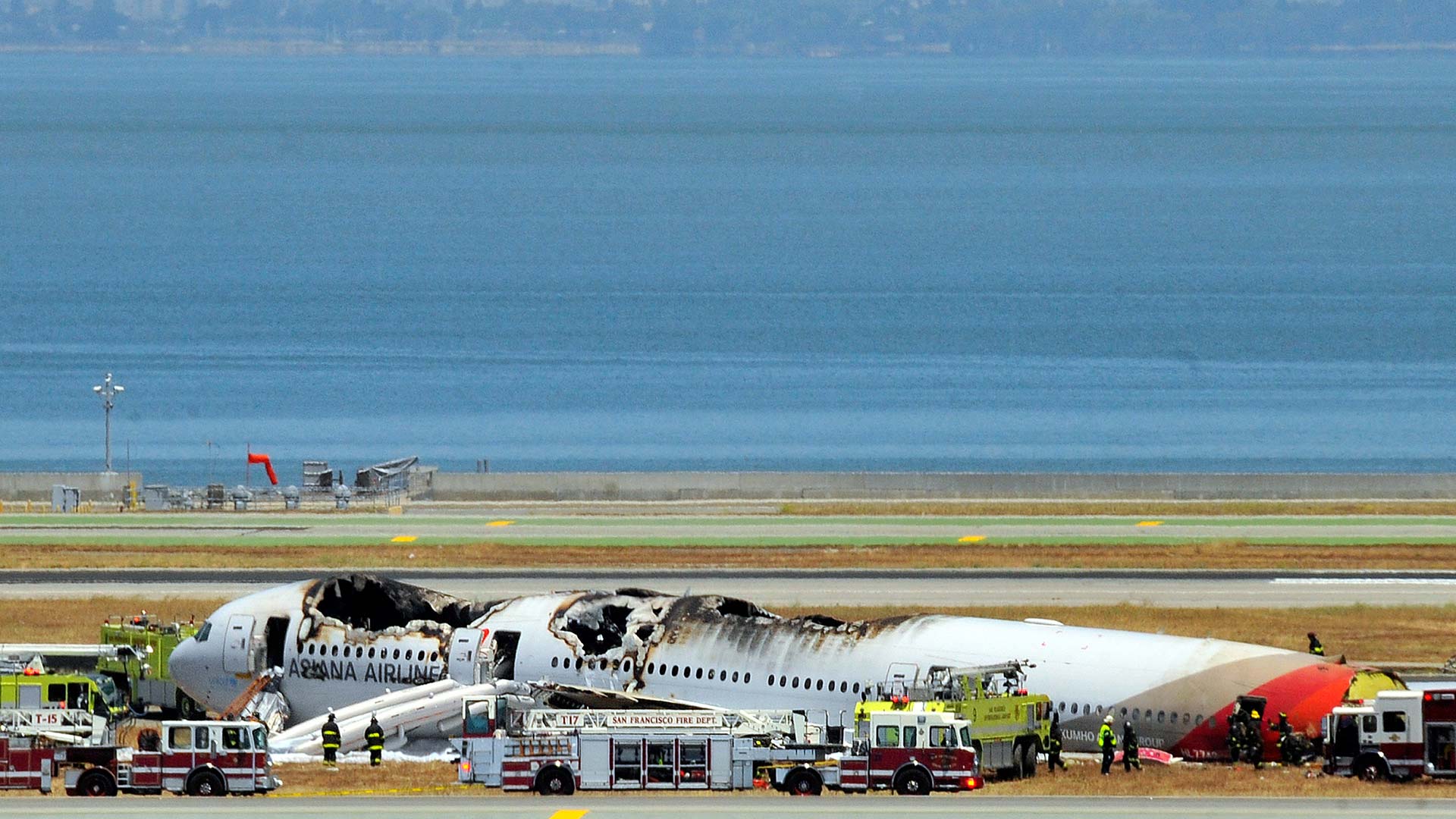

When an emergency takes place the general public expects emergency services to arrive on scene within seconds. In a perfect world that might happen, but we don’t live in a perfect world and there are many response factors that delay arrival times. Between putting on gear, getting into the rig, dispatch delays, traffic and actual response distance, it will most likely take a little bit for an emergency vehicle to get to your location.
After listening to the Asiana Flight 214 radio traffic, watching the tower video and mapping out San Francisco International Airport, I came across of few things. The initial response time was lightning quick. The first ARFF (that was most likely in quarters at the time of the accident) arrived in approximately three minutes and 30 seconds and immediately began spraying foam on the fire.
As you can see below, the nearest on-grounds fire station is two miles from the crash site. That means the ARFF would have to be traveling at a constant rate of approximately 34 mph from the second the flight crashed to arrive at the time you see on the screen. Obviously this is most likely not the case and the ARFF traveled at a higher rate of speed to make up for the dispatch delay. However, my point is that the 23 fire personnel that responded on seven firetrucks did so in a quick fashion.
It shouldn’t be hard for anyone to notice that this is an Mass Casualty Incident (MCI) and thus the San Francisco Fire Department treated it as such. Unfortunately, MCIs can be hectic and a lot of moving parts can sometimes result in a breakdown in communication. That is not an excuse rather a reality. You can run simulations all day, but nothing is like the real thing. As you can see the NTSB report, there is no protocol for maneuvering an ARFF around a crash. There are plenty of protocols how to treat patients and plenty about how to extinguish a fire, just not how to move the truck around.
With this in mind, it is understandable to here the young female victim buried in foam was struck by an ARFF. This tragic accident may have been a result of miscommunication or the hectic environment emergency personnel were in at the time. Although the victim was initially pointed out by several firefighters, the scene continually changed, resulting in the accident.
Now, I am not going to get into the MCI logistics of this particular accident due to how complex they are, but stay tuned for an MCI article in the near future. This particular incident will also be highlighted in the article, including patient triaging.
